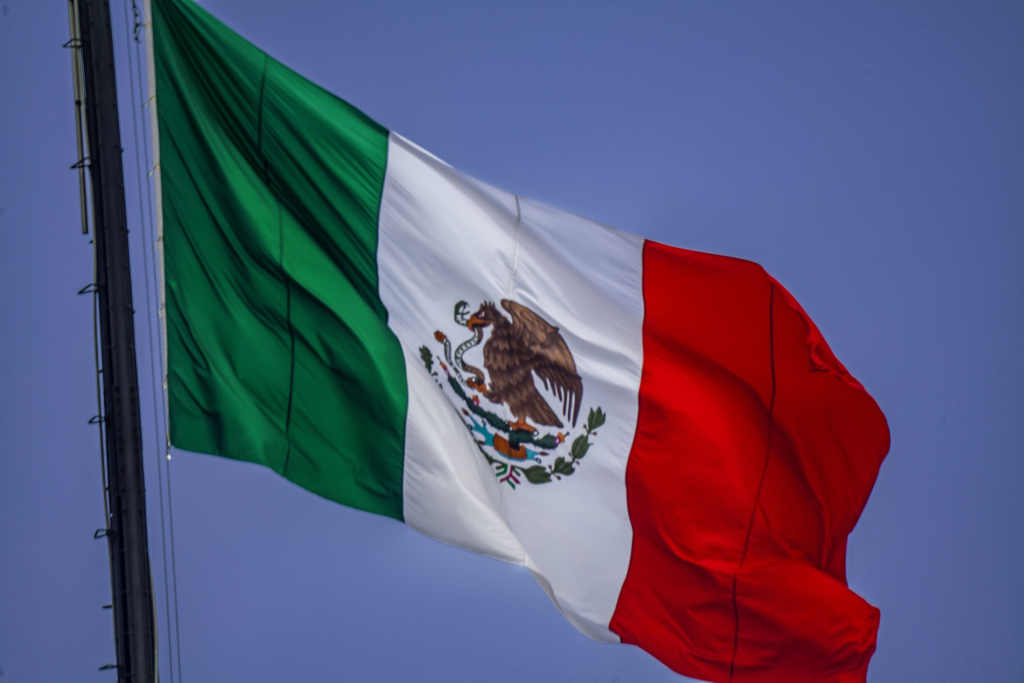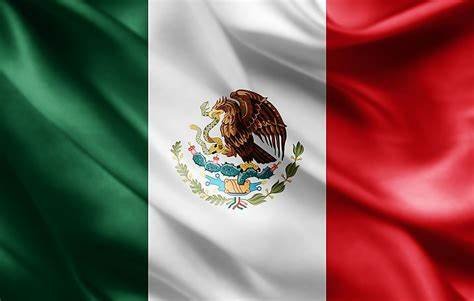The Mexican flag, a vibrant tricolor of green, white, and red, is a powerful symbol of national identity and pride. Its design, steeped in history and legend, represents the core values and aspirations of the Mexican people.
A Tapestry of Colors and Meanings
The three vertical bands of the flag each carry significant meaning:
Green: Symbolizes hope, independence, and the triumph of the Mexican people over Spanish colonial rule.
White: Represents purity, unity, and the Roman Catholic faith, which played a prominent role in Mexican history.
Red: Signifies the blood shed in the struggle for independence and the strength and courage of the Mexican nation.
The Coat of Arms: A Legend Embodied
At the center of the white band rests the Mexican coat of arms, a powerful emblem drawn from Aztec mythology. It depicts a golden eagle perched on a prickly pear cactus, devouring a serpent.
This image is rooted in an ancient Aztec legend. According to the myth, the gods instructed the nomadic Aztecs to establish their city where they encountered this specific vision. They eventually founded Tenochtitlan, the capital of the Aztec Empire, on an island in Lake Texcoco, where they found the eagle, cactus, and serpent.
A History of Evolution
The current Mexican flag has undergone several iterations throughout history:
Early Flags: During the War of Independence (1810-1821), various flags were used by revolutionary forces, often featuring the Virgin of Guadalupe, a significant religious figure in Mexico.
The Plan of Iguala (1821): This agreement, which paved the way for Mexican independence, established the tricolor of green, white, and red as the national colors.
The First Mexican Empire (1821-1823): Emperor Agustín de Iturbide adopted a flag with the tricolor and the imperial eagle.
The Federal Republic (1824-1835): The flag reverted to the tricolor, with the addition of the national coat of arms in the center.
Subsequent Modifications: Minor adjustments were made to the design over the years, including changes to the eagle’s position and the addition of a laurel wreath.
The 1968 Flag: The current version of the flag was officially adopted in 1968, with minor modifications to the coat of arms.

Protocol and Usage
The Mexican flag is treated with great respect and is subject to specific protocols:
Hoisting and Lowering: The flag is typically hoisted at sunrise and lowered at sunset.
Display: It is displayed on public buildings, schools, and during national holidays.
Respect: The flag should never touch the ground or be displayed in a damaged condition.
Flag Day: September 16th is celebrated as Flag Day in Mexico, commemorating the adoption of the current flag in 1968.
The Flag’s Role in Mexican Society
The Mexican flag serves as a powerful symbol of national unity and identity. It is a source of pride for Mexicans around the world and is often displayed during celebrations, sporting events, and other significant occasions.
Beyond its symbolic importance, the flag also plays a crucial role in civic education and national identity formation. It is often featured in schools and public spaces, reminding citizens of their shared history, values, and aspirations.
The Colors
While the official meanings of the colors (green for independence, white for purity, red for blood) are widely known, their interpretations have evolved over time:
Green: Initially associated with the Virgin of Guadalupe, it now also symbolizes hope, the lush vegetation of Mexico, and the country’s agricultural heritage.
White: Represents purity, peace, and the ideals of the Mexican Revolution.
Red: Symbolizes the blood shed in the struggle for independence, the courage of the Mexican people, and the strength of the nation.
The Flag’s Role in Mexican Culture
National Holidays: The Mexican flag is prominently displayed during national holidays such as Independence Day (September 16th), Constitution Day (February 5th), and Flag Day (September 16th).
Sporting Events: It is a common sight at sporting events, with fans waving flags to show their support for Mexican athletes and teams.
Civic Education: The flag is an integral part of civic education in Mexican schools, where children learn about its history, symbolism, and the importance of respecting it.
Cultural Expression: The flag is often incorporated into Mexican art, music, and literature, serving as a source of inspiration and a reminder of national pride.
Final Thoughts
The Mexican flag is more than just a piece of cloth; it is a living embodiment of the nation’s soul. Its colors and symbols tell the story of Mexico’s past, present, and future, inspiring hope, unity, and a sense of shared purpose. As Mexico continues to evolve, the flag will remain a constant reminder of its heritage and a beacon of its aspirations for the future.
FAQs
What is the significance of the Mexican flag in contemporary Mexican society?
The Mexican flag is a powerful symbol of national unity and identity. It plays a crucial role in civic education, fostering patriotism and national pride among Mexican citizens. The flag is often incorporated into Mexican art, music, and literature, reflecting its cultural significance. It is a source of inspiration for Mexicans around the world and is often displayed during celebrations, sporting events, and other significant occasions.
What are the proper protocols for displaying and respecting the Mexican flag?
The Mexican flag is treated with great respect and is subject to specific protocols. It is typically hoisted at sunrise and lowered at sunset. It is displayed on public buildings, schools, and during national holidays. The flag should never touch the ground or be displayed in a damaged condition. September 16th is celebrated as Flag Day in Mexico, commemorating the adoption of the current flag.
How can I learn more about the history and symbolism of the Mexican flag?
You can learn more by visiting museums in Mexico, such as the National Museum of Anthropology, to explore exhibits related to Mexican history and the evolution of the flag. Engaging with Mexican culture through its art, music, food, and traditions can provide deeper insights. Utilizing reputable online resources and academic sources can also offer valuable information on the historical and cultural context of the Mexican flag.
To read more, Click Here




Leave a Reply